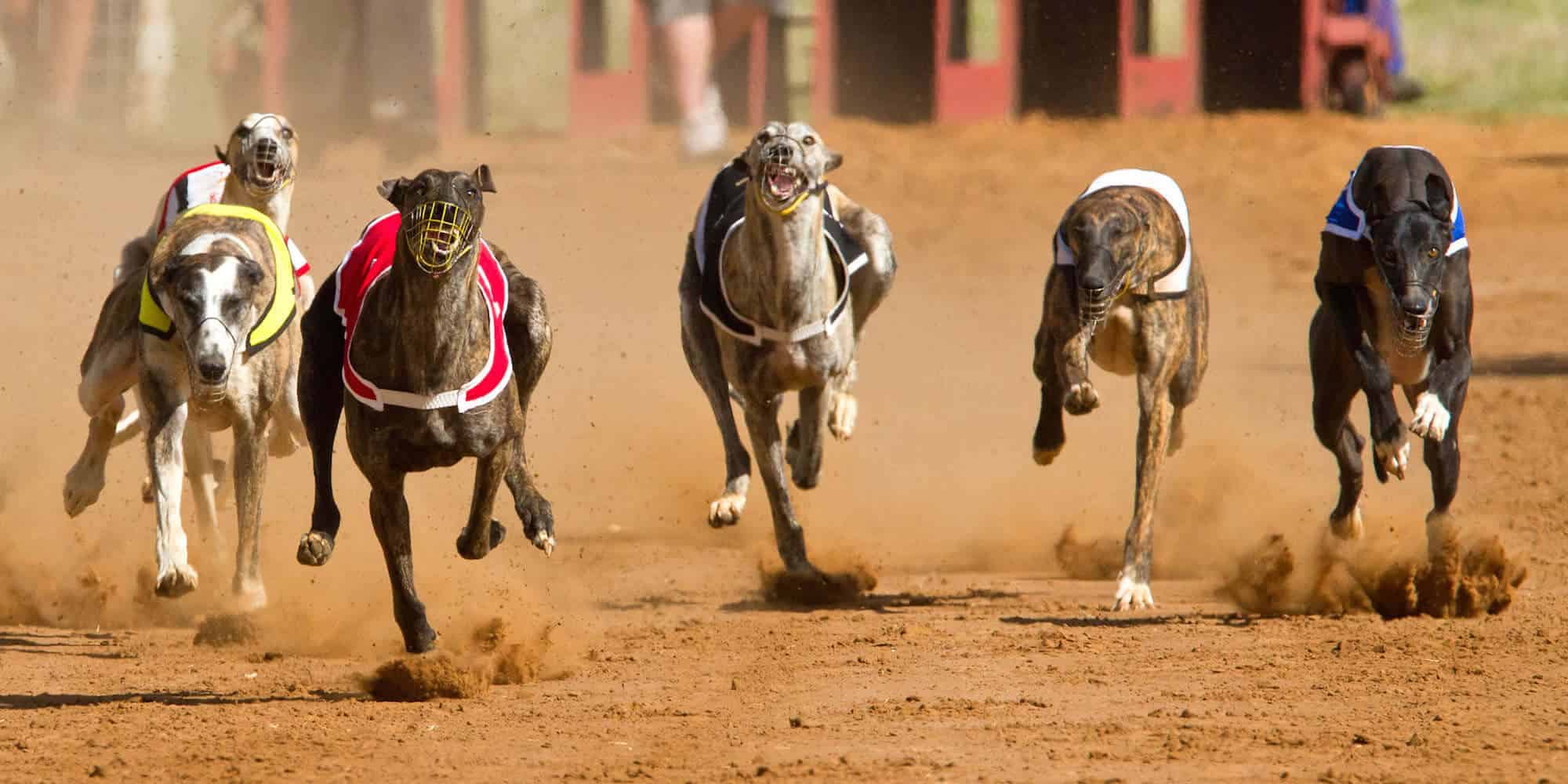In the dynamic world of horse racing betting, statistics play a crucial role in guiding punters towards more informed decisions. The study of form, track conditions, and historical data can reveal patterns and probabilities that help to reduce the inherent uncertainty of the sport. While betting on horse racing can be a blend of skill and luck, having an arsenal of up-to-date statistics enhances a bettor’s ability to predict outcomes and value bets. Therefore, understanding the top statistics for horse racing betting is pivotal in crafting a strategic approach to wagering.
Knowledge of key horse racing statistics not only allows bettors to gauge the potential performance of a horse but also to understand the wider betting market. From the win percentage of favourites and the impact of draw bias on race outcomes to tracking the performance of trainers and jockeys, these metrics can illuminate aspects of horse racing that may not be immediately apparent. By analysing these statistics within the context of current races, enthusiasts can better navigate the complexity of the sport and make betting choices that are backed by solid information.
Key Takeaways
- Statistical analysis in horse racing betting can significantly inform decision-making.
- Awareness of betting market trends enhances the bettor’s understanding of value bets.
- Current and historical data provide a foundation for strategic betting approaches.
Need Help Beating the Bookies?
Our expert betting tipsters have been taking cash off the bookies since 2014! If you need a helping hand with winning then why not check them out?
Browse Our Tipsters
Punter’s Profit Pro
One of the Most Reliable and Consistent Horse Racing Tipsters at Betting Gods
Visit PROFILE
All Weather Place
Our Expert AW Racing Tipster Focussing on the Place Market With Bets Recorded to BSP
Visit PROFILEUnderstanding Horse Racing Betting
The following blog provides a deep dive into the intricacies of horse racing betting, focusing on its fundamentals and its progression over recent years. Readers can expect to find a detailed overview encompassing both the underlying principles and the significant changes that have shaped betting from 2016 to 2024.
Overview of Horse Racing Betting
Horse racing betting is a complex activity that depends on a variety of statistics crucial for informed wagering decisions. Punters often analyse past performance, win/loss ratios, and track conditions. Betting options range from simple ‘win’ bets, where one places money on a horse to win the race, to more complex bets like forecasts and accumulators. Odds are typically displayed in fractional form in the UK, such as 5/1 or 10/3, offering insight into potential winnings.
Betting Types:
- Single (Win/Place)
- Each-Way
- Exacta/Forecast
- Tricast/Trifecta
- Accumulator
Key Statistics:
- Track performance history
- Jockey and trainer statistics
- Horse’s age and form
Evolution of Betting: 2016-2024
From 2016 to 2024, horse racing betting has experienced significant changes shaped by technology and regulatory shifts. In 2016, the landscape was dominated by traditional betting shops and on-course bookmakers. However, with the rise of online platforms, the ease of placing bets has greatly improved. Through this period, online betting has become the norm, incorporating live streaming and real-time data analytics into the punter’s strategy.
| Year | Notable Change in Betting |
|---|---|
| 2016 | Emergence of mobile betting apps |
| 2017 | Increase in in-play betting options |
| 2018 | Introduction of more sophisticated data analytics |
| 2019 | Expansion of cross-border betting markets |
| 2020 | Impact of global events on betting practices |
| 2021 | Growth in AI algorithms for predicting outcomes |
| 2022 | Enhanced focus on responsible gambling policies |
| 2023 | Consolidation of major online betting platforms |
| 2024 | Adoption of virtual and augmented reality in betting experiences |
The implementation of advanced technologies such as AI and machine learning has changed how punters assess horse racing statistics, with predictive models offering more refined odds and outcomes. Additionally, sports betting regulations introduced in the early 2020s have emphasised transparency and player protection, altering the dynamics of the industry.
Key Horse Racing Statistics
To guide strategic betting, it’s vital to understand key statistics such as annual betting turnover, gross gambling yield (GGY), and the dynamics of online betting. These figures shed light on the economic scale of horse racing betting and the behaviours of bettors.
Annual Betting Turnover
The annual turnover of horse race betting is a critical metric, reflecting the total amount wagered in a year. In the UK, horse racing betting turnover runs into billions, illustrating the sport’s popularity and the vast scale of the market.
Gross Gambling Yield
Gross Gambling Yield (GGY) for horse racing represents the amount retained by operators after paying out winnings but before deducting operating costs. This figure includes both on-course and off-course betting, with the annual off-course GGY typically surpassing its on-course counterpart significantly due to higher volume.
Betting Participation Stats
Statistics regarding betting participation present insights into the number of bettors engaging with horse racing. They highlight trends such as the prevalence of active online bettors and the proportion of bets placed through pool betting systems compared to traditional bookmakers.
Online Betting Market Analysis
The Online betting market has grown exponentially, with more bettors opting for the convenience of digital platforms. Analyses show increases in both online bets and monthly GGY from these platforms, underscoring a shift in bettor preferences and adaptation within the industry.
Racecourse and Track Analysis
In the realm of horse racing, the significance of racecourse specifics cannot be understated, as they directly influence outcomes. Knowledge of track statistics and nuances alongside class and distance factors is pivotal for informed betting decisions.
Track Statistics and Trends
Track statistics offer a wealth of insight into how different conditions can affect the performance of horses. Each racecourse has unique characteristics that can influence race outcomes. It is essential to consider track direction, with some favouring right-handed (R/H) courses, others left-handed (L/H), and the nature of the course, whether it is galloping, sharp, or undulating.
- Curragh: Known for its R/H galloping nature, providing a fair track for all running styles.
- Doncaster: A L/H galloping track that is accommodating to both front-runners and hold-up horses.
- Down Royal: Features a R/H sharp, undulating course with a downhill straight that can challenge hold-up horses, especially in 5f sprints.
Statistics and trends tailored to each track can guide punters on which horses perform well under specific course conditions, and can offer insight into in-form trainers and jockeys who have a history of success on particular tracks.
Class and Distance Factors
Class and distance are crucial components that impact horse racing dynamics. The class refers to the level of the competition horses are entered into, with higher classes indicating higher quality fields of competitors. Distance is a determining factor in the type of horse suited to a race, ranging from sprints of 5f to long-distance races of over 2m.
Class Breakdown:
- Group 1: The highest level of races, includes classics and other races of international importance.
- Group 2: Just below Group 1, for horses just short of the top level.
- Group 3: Still high-quality racing but a step below Group 2.
Key Distance Categories:
- Sprints: Typically 5-6f, require speed and acceleration.
- Middle distance: Ranging from about 1m to 1m4f, a combination of speed and stamina is key.
- Long distance: Races beyond 2m, where endurance is of utmost importance.
Distance analysis is crucial, as some horses excel in specific lengths, which is often reflected in their past performances. Bettors ought to consider how a horse has fared at the current race’s distance and its performance against similar classes in previous events.
Horse Racing Betting Options
In horse racing betting, the punter has a variety of betting options ranging from straightforward single bets to complex multi-selection accumulators. Understanding the types of selections and how single bets operate, including the concept of best odds, is crucial for informed betting.
Types of Selections
Selections in horse racing refer to the specific outcomes on which punters place their bets. These vary in complexity and potential returns. Here are the common types used:
- Win: A bet on a horse to finish first.
- Place: A bet on a horse to finish within the top positions, typically first or second.
- Show: A bet on a horse to finish in the top three.
- Exacta: A bet where the first and second finishers must be chosen in the correct order.
- Trifecta: Choosing the first three finishers in the right sequence.
- Patent Bet: Includes 3 singles, 3 doubles, and 1 treble from 3 selections.
Understanding Single Bets and Best Odds
A single bet is the simplest form of betting in horse racing:
- Single Bet: A bet on a single selection to meet a specific outcome, such as a win.
When it comes to getting the best value from these bets, look for Best Odds Guarantee:
- Best Odds Guarantee: Bookmakers offer a promise that if a punter takes an early price or board price and the starting price (SP) is greater, they will pay out at the higher odds if the selection wins.
Betting Shop Dynamics

The landscape of betting shops in the UK has experienced a shift, reflecting changes in customer preferences and evolving regulations. The distinction between betting at the racecourse and off-course wagering has been pivotal in understanding the industry’s dynamics.
High Street Betting Shop Scene
High street betting shops, a traditional staple in British gambling culture, have been the front line for bookmakers. These establishments have been crucial for bettors who prefer a physical location for placing their wagers. Traditionally, bookmakers like William Hill, Ladbrokes, and Coral dominated the scene with their expansive networks of betting shops across the UK.
- Size and Presence: These shops offer a range of betting services on various sports, with horse racing being a prominent focus.
- Customer Experience: They provide live broadcasts of races, creating an environment where bettors can gather, discuss, and place bets on upcoming races.
Course vs Off-Course Betting Trends
Course betting refers to wagers placed directly at the racetrack, which has long been part of the racing experience. Off-course betting, on the other hand, occurs outside the racecourse, including high street shops and online platforms.
Course Betting:
- Interaction: Bettors have the chance to interact directly with bookmakers at the racecourse.
- Atmosphere: The betting experience is enhanced by the live racing atmosphere.
Off-Course Betting:
- Convenience: Bettors can place wagers without being at the racetrack, favouring increased flexibility.
- Trends: There has been a significant shift towards online betting, evidenced by a decline in off-course betting volume, from £5.74 billion in 2008 to approximately £3 billion in 2022.
The dynamics between course and off-course betting continue to evolve, influenced by the broader economic landscape and technological advancements that shape consumer behaviour.
The Role of Participants
The intricate web of horse racing betting is sustained by the pivotal roles played by jockeys, trainers, handicappers, punters, and bookmakers. Their interactions and expertise shape the betting landscape and influence the odds and outcomes of the races.
Jockeys, Trainers, and Handicappers
Jockeys carry the responsibility of navigating the horse during the race, where their skills can significantly affect the outcomes. They train rigorously, understanding the nuances of each course and their equine partners. Trainer and jockey combinations are often scrutinised by punters for patterns of success or preferred racing conditions.
Trainers are the architects behind a horse’s racing strategy and form. They make critical decisions about the horse’s training regimen and race entries, aiming to peak at the right moment. Punters closely watch a trainer’s track record, strike rates, and performance on different race tracks.
Handicappers, on the other hand, have the challenging task of assigning weights to horses with the goal of levelling the playing field. Their assessments can dramatically sway the betting odds, as they take into account previous performances, track conditions, and the horse’s ability to run with given weights.
Punter and Bookmaker Relations
Punters engage in the betting process with varying degrees of research and strategy. They analyse past performances, track conditions, jockeys, and trainers, in the hope of finding an edge. The relationship between the punter and the bookmaker is a game of knowledge and timing, where each party seeks to outdo the other.
Bookmakers set the odds for each race, reflecting the perceived chances of each horse winning, which are influenced by the betting flows from punters. They must balance their books to guarantee profit, adjusting the odds as bets are placed. This changing market offers dynamic opportunities for both the casual and the serious punters.
Regulatory Landscape and Revenue
This section focuses on the intricacies of the regulatory framework governing horse racing betting in the UK and the financial performance of the sports betting sector.
Licensing and Legal Framework
The regulatory authority for horse racing in the UK is the British Horseracing Authority (BHA). They ensure that all betting activities, including horse racing betting, comply with the necessary legal framework. Participation in the betting market requires that operators obtain the appropriate licence, adhering to terms and conditions set forth by the regulatory bodies. The Gambling Commission oversees these licences, ensuring that operators provide a fair and transparent betting environment.
Sports Betting Sector Financials
The Betting Industry: In Great Britain, the gross gambling yield (GGY) for the betting sector was approximately £2.13 billion from April 2021 to March 2022. Among this, horse race betting is a significant contributor to the sector’s revenues.
Revenue Sources: Horse racing betting revenues come from both offline (traditional betting shops) and online platforms. The tax revenue generated by the British horse racing industry is significant, with figures around £300 million annually.
| Fiscal Year | Gross Gambling Yield |
|---|---|
| April 2021 – March 2022 | £2.13 billion |
The sportsbook sector within the UK is a pivotal component of the sports betting landscape, offering a wide array of betting opportunities to punters and generating substantial revenue for the industry.
Comparative Gambling Statistics
The gambling landscape in the UK encompasses a wide array of betting activities, with horse racing, sports betting, and casino gambling each holding its own significance. This section provides data-driven insights into how these sectors contrast and which brands lead the market.
Horse vs Sports vs Casino Betting
Horse racing has traditionally been a cornerstone of UK betting culture. However, statistics reveal a shift in participation toward online platforms. As of 2022, significant decreases were observed in horse race betting turnover in Great Britain, with prior years boasting a more robust figure of £5.74 billion in off-course bets placed in 2008.
In comparison, the sports betting market, including football and dog race gambling, has also faced fluctuations. The gross gambling yield (GGY) of pool betting on football was approximately £2.13 billion between April 2021 and March 2022. The turnover of football pool betting, however, witnessed a period of decline during similar intervals.
Casinos, both physical and online, maintain a staple position within the UK gambling scene. Online gambling participation, in particular, has seen a surge, showcasing the public’s inclination towards the accessibility and variety offered by digital platforms.
Leading Gambling and Betting Brands
The UK is home to numerous acclaimed gambling brands. Market leaders often set industry standards and innovate to retain customer loyalty in a competitive field. In the context of the most popular gambling brands, household names such as Bet365, William Hill, and Ladbrokes are frequently at the forefront. These operators span across betting sectors and are prominent players in both on-site and online gambling markets.
The gambling and betting activities sector sustains a vital segment of the UK economy, with enterprises that range from small-scale betting shops to expansive online operators. Employment within the sector is diverse, with thousands of individuals contributing to the success and development of these esteemed gambling brands. Employees work in various roles, from customer service positions in betting shops to software development roles within online gambling companies.
In summary, the comparative statistics of the UK gambling industry highlight an evolving landscape. Changes are often shaped by consumer behaviour, technological advancements, and the competitive strategies of leading gambling enterprises.
Future of Horse Racing Betting
The horizon for horse racing betting shows a dynamic shift towards more sophisticated online platforms and enhanced user experiences with technological integration. Bettors can anticipate these developments to further entice engagement and provide comprehensive data-driven insights into horse racing.
Trends and Predictions
In 2024, online betting remains the pivotal medium for horse racing wagering, with leading websites investing in user-friendly designs and tailored betting experiences. They’re leveraging real-time data and analytics to offer more informed betting options. A trend towards mobile optimisation reflects the growing preference for placing bets on-the-go, suggesting a future where convenience and accessibility are front and centre for the industry.
- Mobile Betting Growth: Increased use of smartphones for betting.
- In-Play Betting: Real-time betting during races grows in popularity.
- Enhanced User Experience: Personalised betting journeys based on user behaviour.
Technological Advancements in Betting
Technological advancements are revolutionising horse racing betting. In 2024, bettors benefit from comprehensive live data from racecourses globally, transforming the decision-making process in betting. There’s a major focus on augmenting the traditional betting experience with interactive and immersive digital solutions.
- Total Performance Data: Live data analytics aid in more accurate betting.
- Virtual Reality (VR): Offers immersive race viewing and betting experiences.
- Artificial Intelligence (AI): AI-driven insights for better bet predictions.
Leading websites are integrating these technologies to attract tech-savvy bettors and provide detailed insights into each horse’s performance, which in the past was largely speculative. The future of horse racing betting is not only about the thrill but also about informed strategies and advanced technologies that can significantly enhance the betting landscape.
Concluding Remarks
In the realm of horse racing betting, statistics function as a guiding compass for punters. They illuminate trends and probabilities that are not immediately apparent. For example, recognising that a horse consistently performs well on certain tracks, that specific jockeys have higher win rates, or acknowledging that favourites win approximately 30-35% of races, can significantly inform betting strategies.
The UK horse racing industry bears witness to large attendances, with millions enthusiastically following the sport annually. This enthusiasm translates into a substantial betting turnover, even though there has been a noted decline over the past decade.
Here are key takeaways:
- Betting on favourites: On average, they emerge victorious in one-third of races.
- Jockey expertise: Wins are often associated with jockeys who have demonstrated high success rates.
- Course form: Some horses show better performance at particular courses.
- Market movements: Odds fluctuation can indicate insider knowledge or shifts in public opinion.
It is paramount that each punter devises a strategy that resonates with their individual style and risk appetite. Opting for reliable bookmakers and making informed decisions can elevate the betting experience. Lastly, it is crucial to bet responsibly and within personal limits to maintain the enjoyment of this time-honoured sport.
Frequently Asked Questions

In the complex world of horse racing betting, certain statistics stand out as essential for informed decision-making. This section addresses the common queries related to these statistics.
Which statistics are crucial for making informed bets in horse racing?
Bettors should consider a horse’s past performance on similar track conditions, the win and place rates of the horse and jockey, average winning distances, as well as times clocked over specific distances. Trainer statistics and return on investment (ROI) for different betting angles are also significant.
How can I develop a profitable betting strategy for horse racing based on reliable statistics?
Profitable betting strategies in horse racing often involve thorough analysis of form guides, understanding of value betting, and consistent tracking of betting patterns. Statistically informed strategies may focus on specific bet types, stake management, and selection processes to identify value bets.
Where can one access up-to-date and historical horse racing statistics for betting purposes?
Current and historical horse racing statistics can be accessed through official racing forms, racetrack websites, specialised betting analytics services, and industry databases. Punters should seek sources that offer comprehensive data including odds, race conditions, and performance metrics.
What role do odds play in determining the most likely winners in horse racing?
Odds are a reflection of the market’s perception of each horse’s chance of winning, informed by factors such as past performance, track conditions, and public sentiment. They are critical in calculating potential payouts and assessing the implied probabilities of each outcome.
How effective is the second favourite horse racing system in comparison to other betting strategies?
The second favourite system, which involves betting on the second-most favoured horse, may yield consistent results but generally offers lower returns. Its effectiveness compared to other strategies depends on the race, odds, and the specific dynamics of the betting market.
What kinds of bets offer the highest chances of winning in horse racing?
Simpler bets like win, place, and each-way bets typically offer higher chances of winning due to their straightforward nature. Exotic bets such as trifectas and quadrellas provide higher payouts but come with significantly lower probabilities of success.





